At RISE, students pursue invention and find themselves
Alexis Cook had come to Northeastern to be an architect. Four years ago, she had moved across the country from her home near Napa Valley, California, to design buildings.
On Thursday, at the 2019 Research, Innovation, and Scholarship Expo on the Boston campus, her presentation served to explain a new and entirely unpredictable point of view. Cook was no longer focused on the aesthetics of design. Instead, she was explaining her proposal to grow and study ovarian cancer cells in three dimensions.
Cook will be graduating next month with a degree in architecture. From her own point of view, however, she is now a pre-med.
“My mom is like, ‘You’re getting a degree in something you’re never going to use,’” Cook said as she stood on the crowded and noisy floor of the repurposed Cabot Cage, where the Northeastern baseball team practices in winter. “But I’m glad I did. I’ve learned a lot about problem-solving and communication and representing things that aren’t clear.”
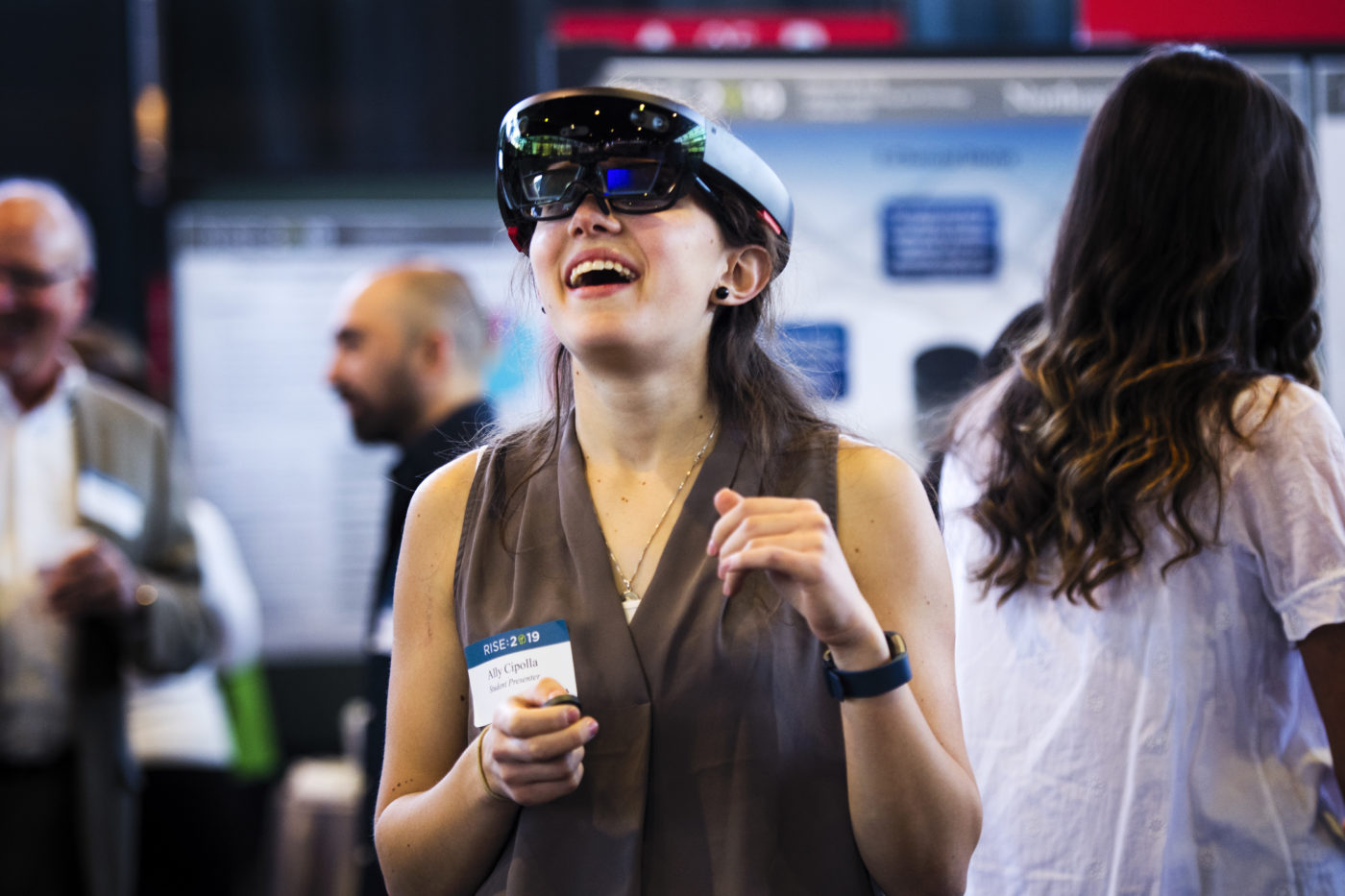

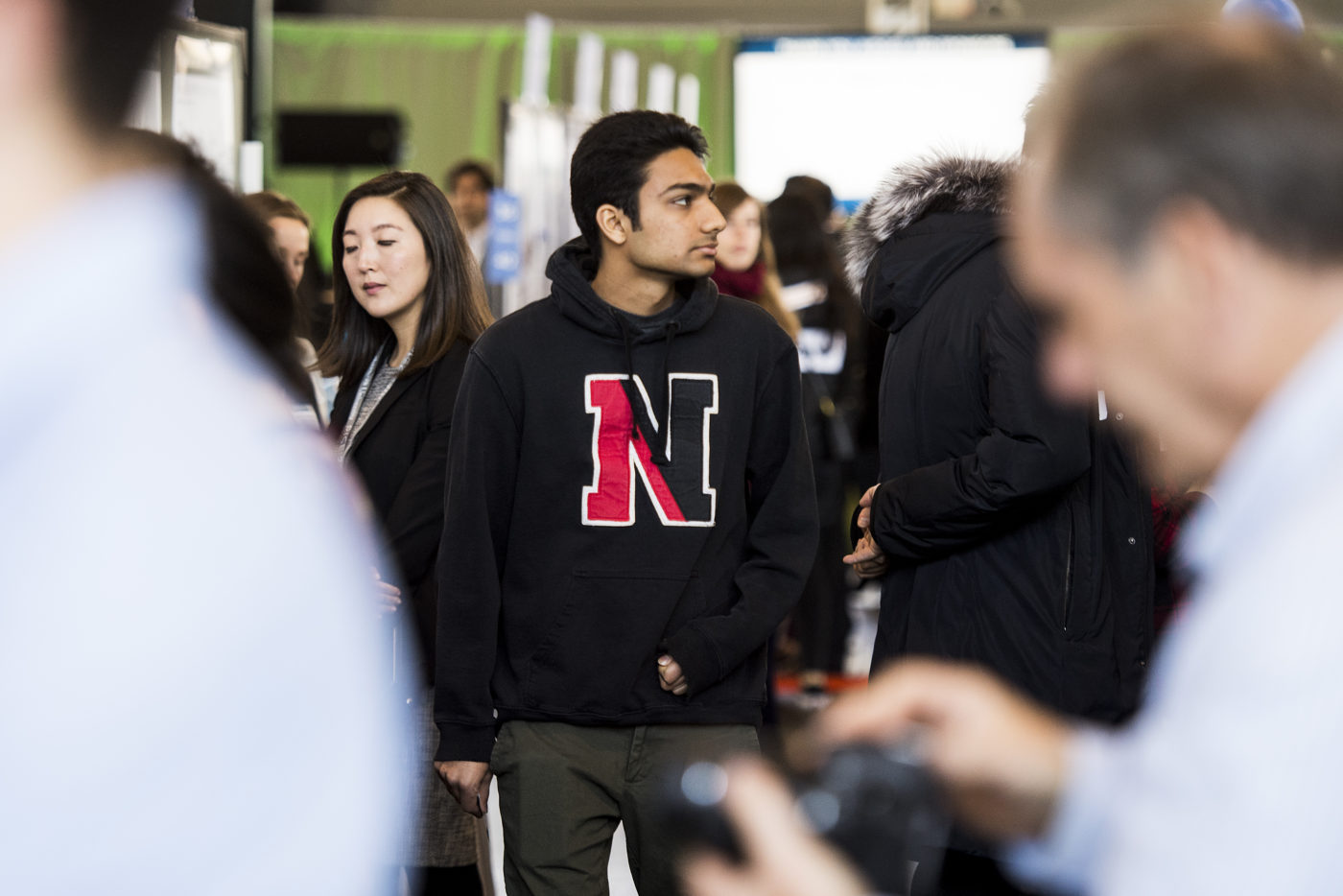
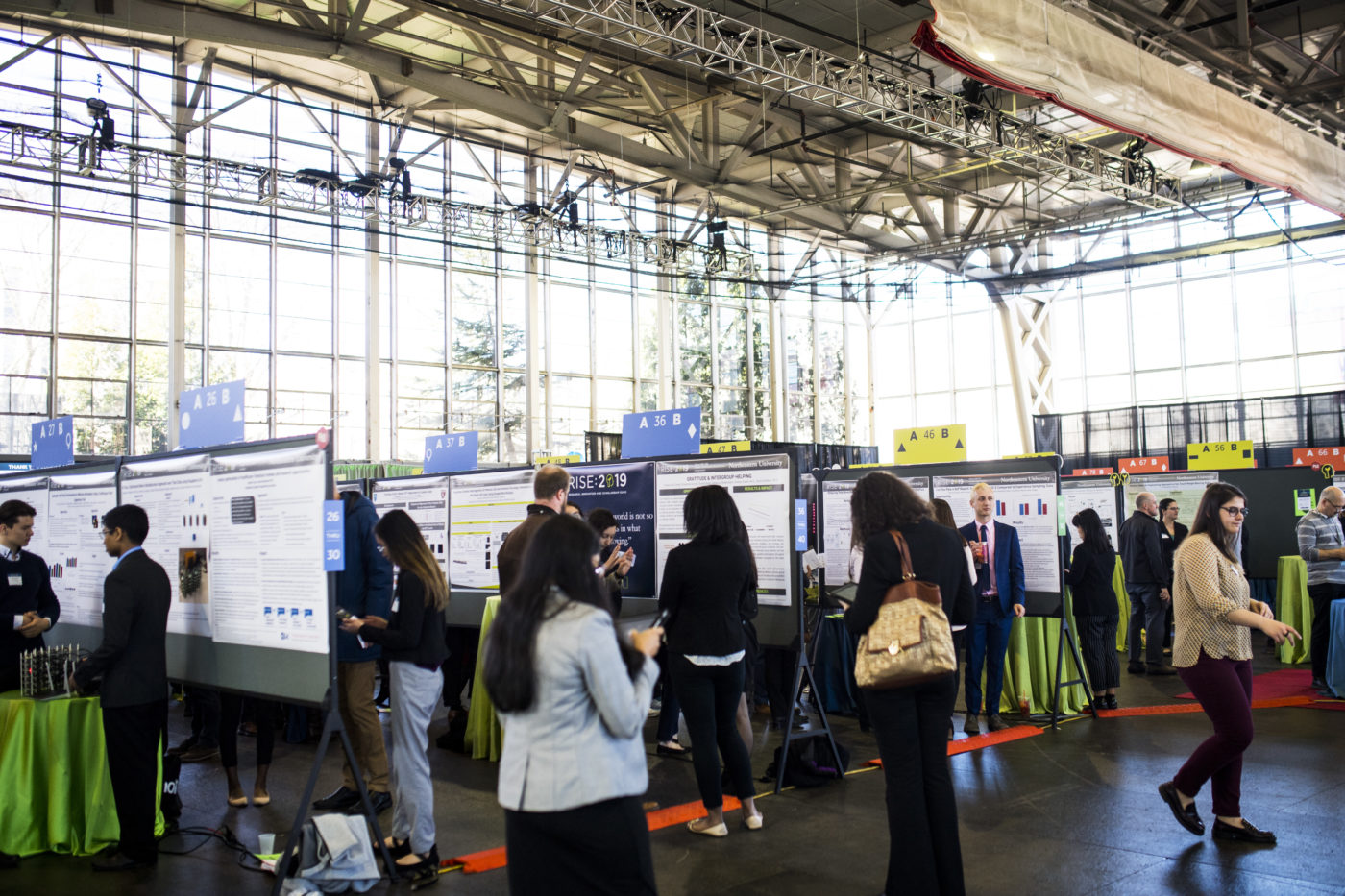
Cook was among the hundreds of students participating in the annual expo, known as RISE. They were lined up, row after row, alongside their projects, which in most cases were spelled out with text and graphics on easily digestible posters. A procession of fellow students, event judges, faculty, entrepreneurs, industry leaders, investors, and researchers would stop and invite Cook and the other presenters to explain their projects and make their pitches.
“There’s money on the line: The winners get cash awards to continue their work and research,” said Mark Saulich, a senior commercialization manager at Northeastern’s Center for Research Innovation. “It’s exciting for the students, and really neat for industry to get a peek inside the early stages.”
See a Complete List of RISE 2019 Winners Here
Diego Rivera, a mechanical engineering student, led a group that was touting magnetic microwires as a means of measuring and salvaging wasted electrical energy from next-generation machines.

RISE offered new points of view. Photo by Adam Glanzman/Northeastern University
Aakash Rohra, who is studying computer engineering, was part of a team that developed socially-aware robots that can distinguish humans from objects.
Kersha Burke, majoring in health science, studied teenage pregnancies for correlations between unintended pregnancies and preterm births.
Jared Walsh, a former Army combat engineer and mechanical engineering undergraduate in the College of Professional Studies, designed a prototype that uses a heartbeat monitor, accelerometer, and other tools to prevent military weapons from being fired by unauthorized users.

Award winners received money to further their research. Photo by Adam Glanzman/Northeastern University
“You see different colleges and labs that are collaborating together on these projects,” Saulich said. “And then the award ceremony is held at the Interdisciplinary Science and Engineering Complex, a building that is meant to facilitate cross-school collaboration. So I think Northeastern does a good job of making sure people aren’t just off in their little silos and working in their own labs.”
Cook is an embodiment of that versatility. She was serving an architecture co-op in the facilities department at Boston’s Dana-Farber Cancer Institute in July 2017 when she experienced her change of heart. Her original path to architecture—five undergraduate years plus a master’s degree, to be followed by a lifelong career in building design—was erased. She will graduate next month in her original major, but anticipates applying to medical schools while doing clinical work over the two years ahead.
“What really drove me every morning was helping the patients,” Cook said. “I was able to make these drawings that was going to improve these rooms [at the hospital] and help them in some way. But then I realized, maybe it’s not the architecture that I like here—maybe it’s the mission of Dana-Farber.”
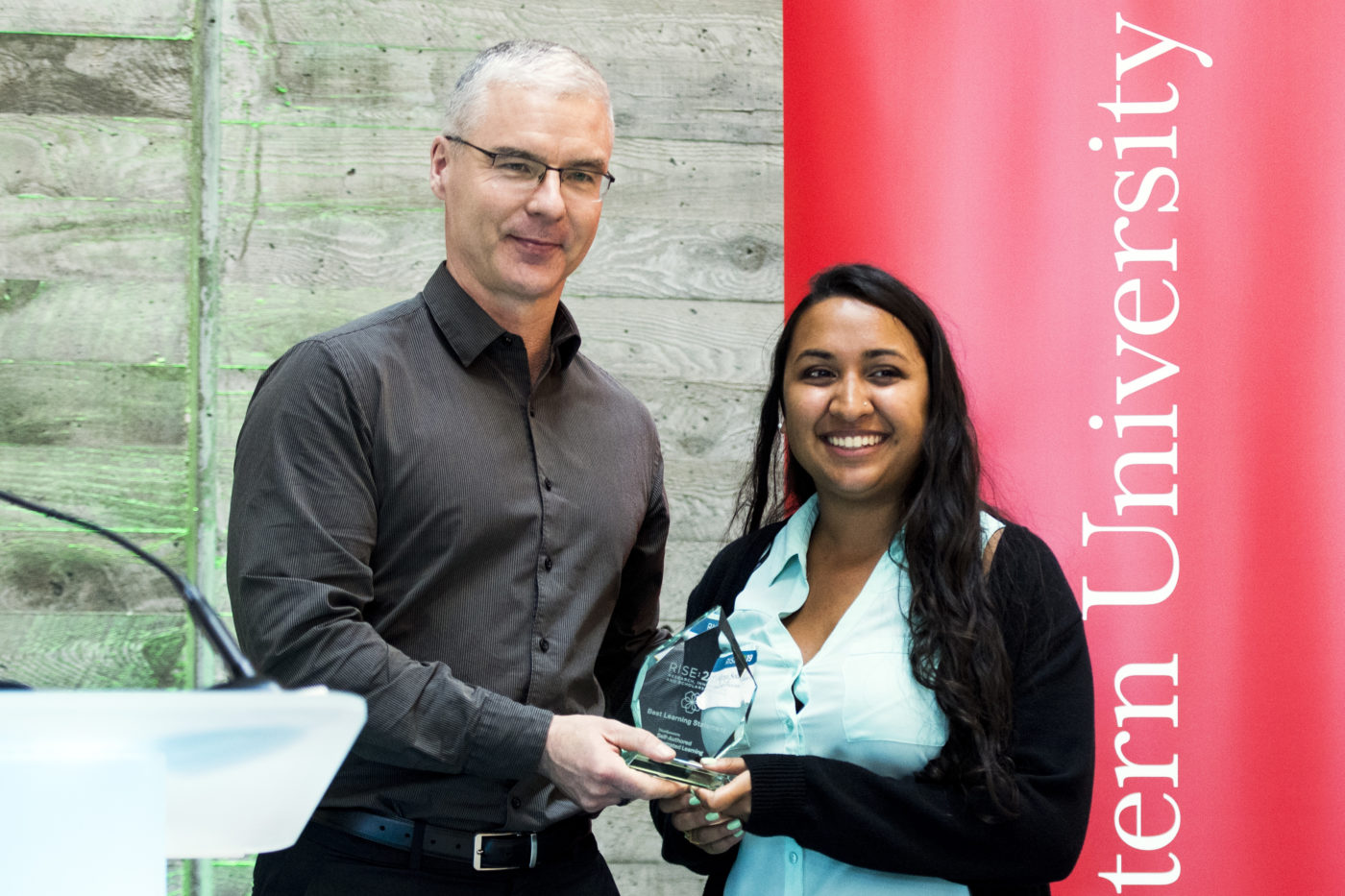
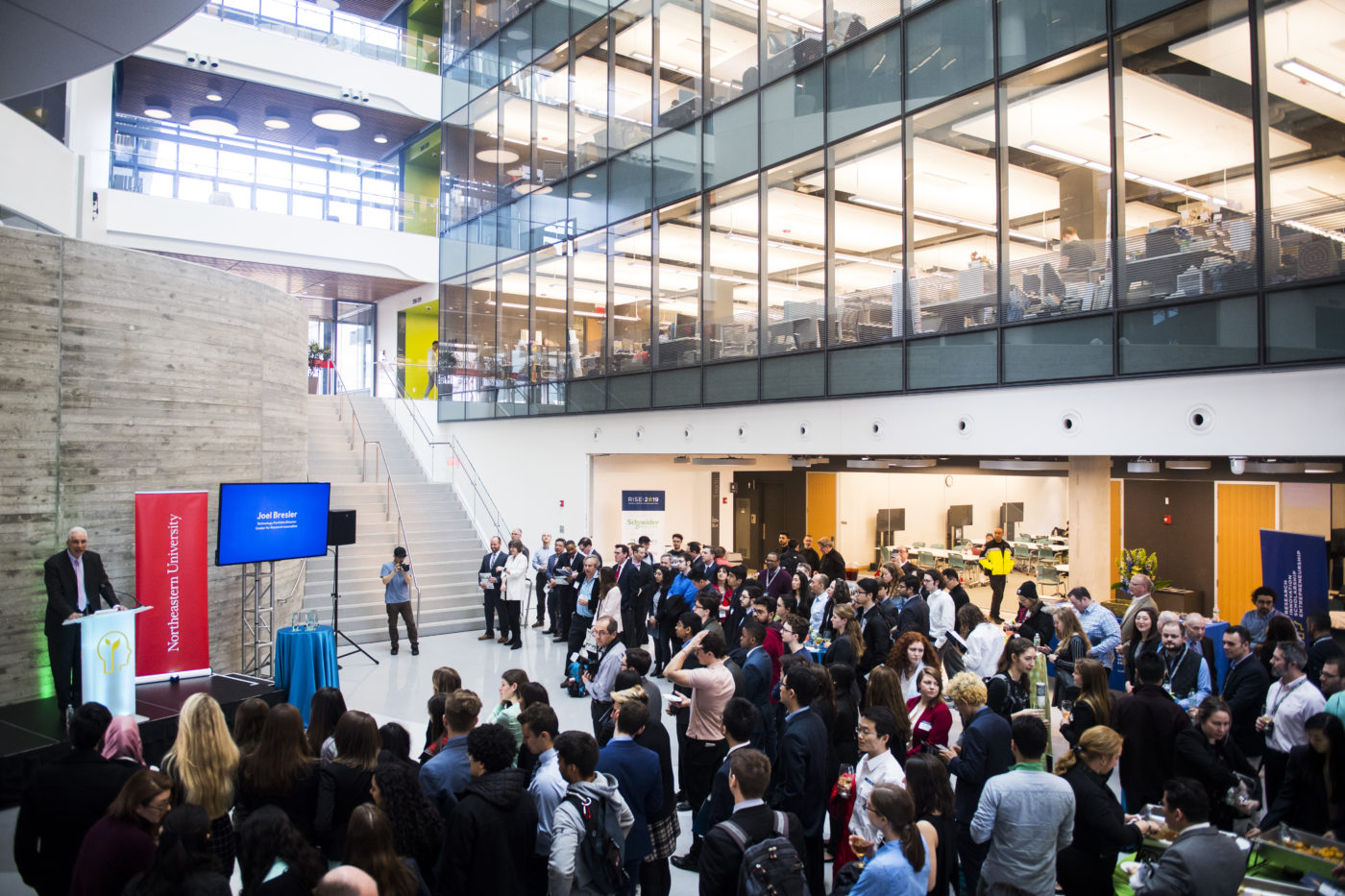
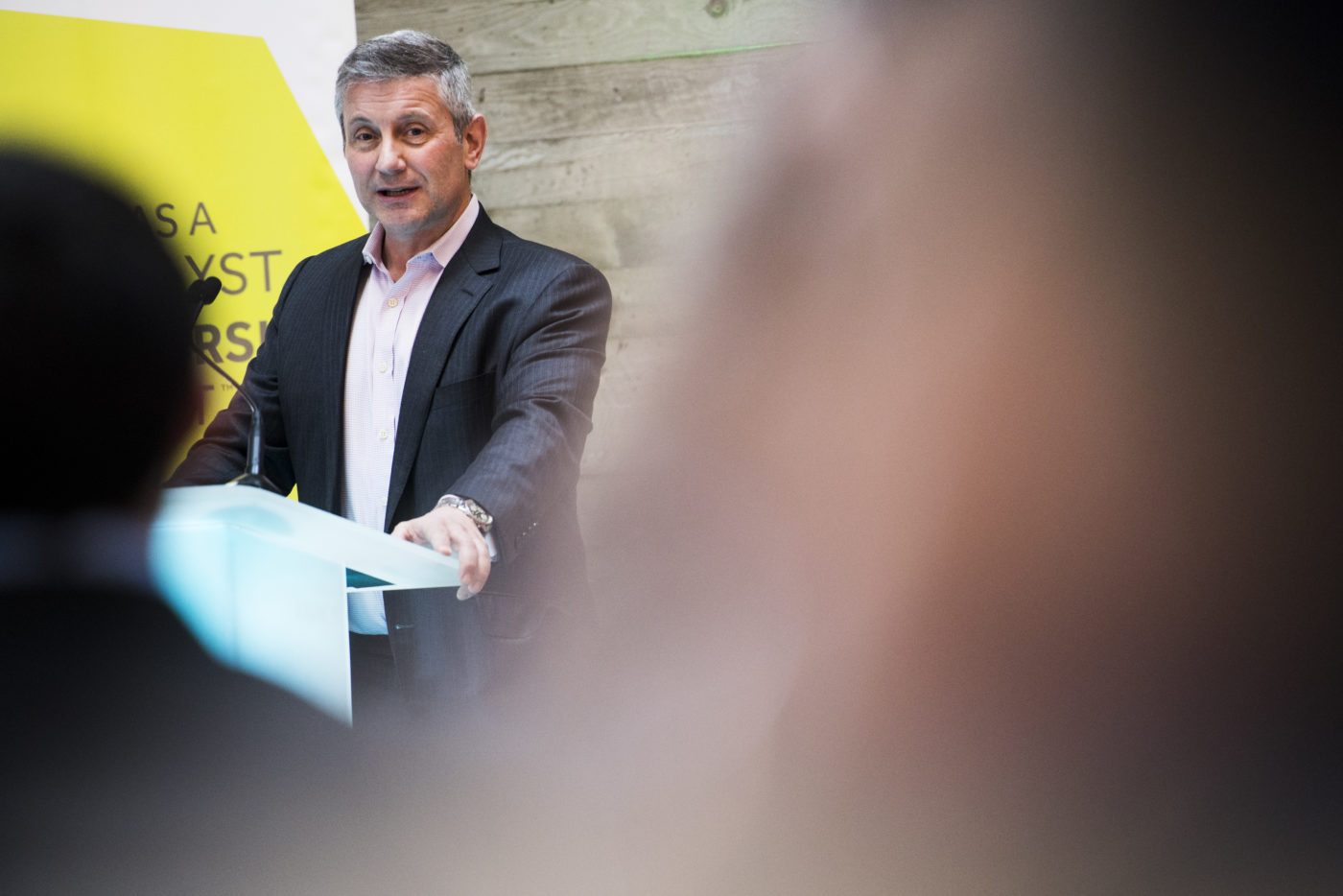
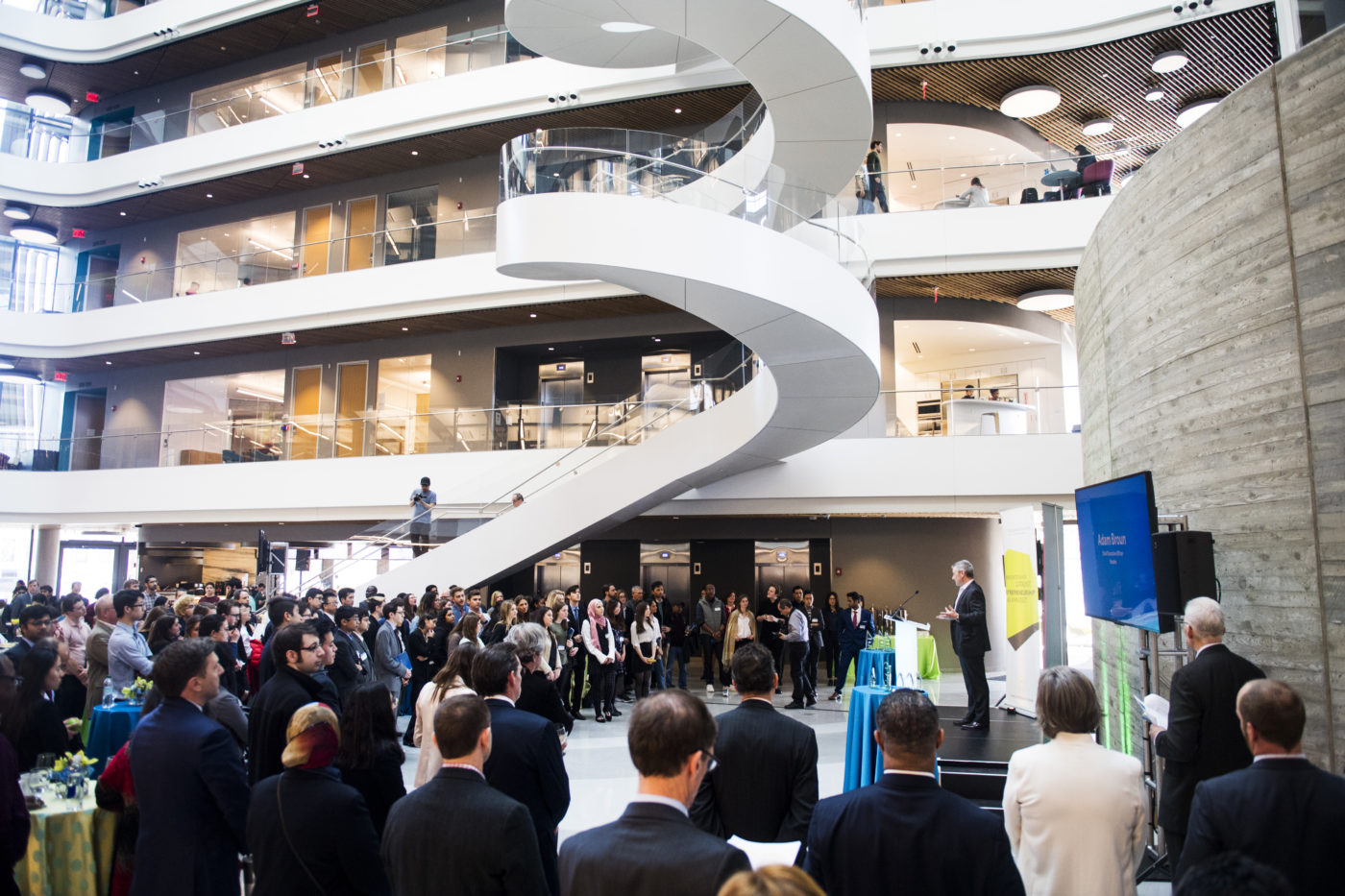
Since July, Cook has been a research intern at the Brugge Lab at Harvard Medical School, where she has been growing 3-D breast cancer tissue using organoid techniques, which enable cells from biopsies to be grown and studied in order to create individualized therapies. The same kind of investigatory research was applied to her presentation at RISE, in conjunction with researchers at Harvard and John Hopkins Medical School. Her project was headlined, Fallopian Tube Organoids for Modeling Ovarian Cancer Development.
It borrowed strengths earned from her original discipline. From architecture, Cook had learned how to solve problems, to communicate and collaborate, and to convert ideas into hard-lined edges.
Cook’s project did not win an award. But then, her academic career has served as one extended lesson in unexpected outcomes.
“I wouldn’t have had the opportunity to be working at Dana-Farber unless I was an architecture major,” Cook said. “Unless I went on that path. So, definitely, I have no regrets about anything.”
For media inquiries, please contact media@northeastern.edu.
Last Updated on June 26, 2019
